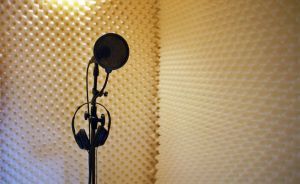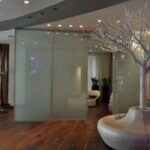So you want to soundproof your home studio huh? There are a couple of major factors when it comes to soundproofing a room; one of those things is insulation. Insulation is very important because this determines how your vocals will sound before the final mix. Do you want a room with lots of reverb? Or are you looking for a completely “dead” room to record your vocals dry? Either way, you’re going to have to take the right steps to make sure you get the sound you want. Soundproofing a room can save you tons of money and tons of complaints (those 3am sessions.) Below I will list 2 different ways to soundproof your home studio. One of those ways is called “Poor Man’s Way” which caters to those on a budget or looking to use average household items. The other one is called “Professional Bizness” meaning you use the top materials to construct your room. Well…….let’s get to it!
Poor Man’s Way Materials:Couch foam (couch cushion material)
Carpet pieces (optional)
Small Nails
Crazy Glue (optional)
Step 1: First thing you must do before you construct any kind of room is lay out all of your materials. This will makes things go a lot faster and smoother.
Step 2: Once you have everything laid out, pick the room that you’re going to soundproof. In order to find out where you need to put insulation you’re going to have to find the “sensitive” spots of the room. These spots are easy to find if you do the “Hand Clap” method. This involves standing in the middle of the room and clapping your hands real loud. Wherever the sound bounces off the walls at, that’s where you’re going to need to put insulation. Go around the whole room until you pinpoint all of these spots.
Step 3: Start by putting a layer of carpet down on the wall and securing it down with nails. Crazy glue may aid in helping the carpet stay up on the wall a little better. Note that some people will simply insulate a whole room if they want it completely “dead”. However; padding down the whole room will also cause your vocals to sound “emotionless”, meaning they have no natural reverb from the room.
Step 4: Once you’ve put the carpet on the wall everywhere that you want it, start placing the couch foam over the carpet layer. You will need to secure the couch foam down with small nails since it’s thicker than the carpet. Try not to overlap the couch foam, as it will affect your overall vocal sound. The vocals will bounce off the uneven foam sometimes causing your vocals to sound slightly distorted.
Step 5: Once done with padding, do another sound test. This time do the “Yell Test” meaning stand in the center of the room and yell to see if you hear any echo. Having a little echo is a good thing, however; if you don’t have enough padding you will hear the echo bounce off the wall which is a bad thing. That just means add more padding around those super sensitive parts of the room. Once you have the room how you want it, leave it! You can now begin your recording in your soundproof room!
Professional Bizness Materials: Studio Foam
Studio Foam Glue
Small Nails (optional)
Step 1: Start off by purchasing some Studio Foam. You might have seen this used by some of the hottest musicians and producers. By using Studio Foam you will ensure that your vocals sound the best they can sound. This means crystal clear clarity which makes for a fuller mix. Studio foam will most likely come in square pads or rectangle wedges, therefore making it easier to work with on corners of the room. Start by doing the “Hand Clap” test to determine which part of the room you must insulate.
Step 2: Put some Studio Foam glue on the back of one of the pieces of foam and press firmly against the wall. It’s best to press and hold the pad in the place for about 10 seconds to make sure the glue actually sticks to the wall. Do this around all the sensitive parts of the room that have excess echo.
Step 3: When using Studio Foam it’s also best to place a couple of pads or wedges on the ceiling. A lot of producers choose not to pad the ceiling because they want a wider “backdrop” for the vocals, but I recommend placing a couple pads just to balance out the room. Once all pads are in place, go over them by placing 1 or 2 small nails in the corners just to ensure they don’t fall.
Step 4: Once done with pads, do a sound test by yelling loud to see where the echo is. If you hear lots of echo that means more pads. However; if you yell and hear little to no echo, then you’ve done a good job! You can now begin recording in your soundproof room!
For tutorials and info on how to build a vocal booth click here.



